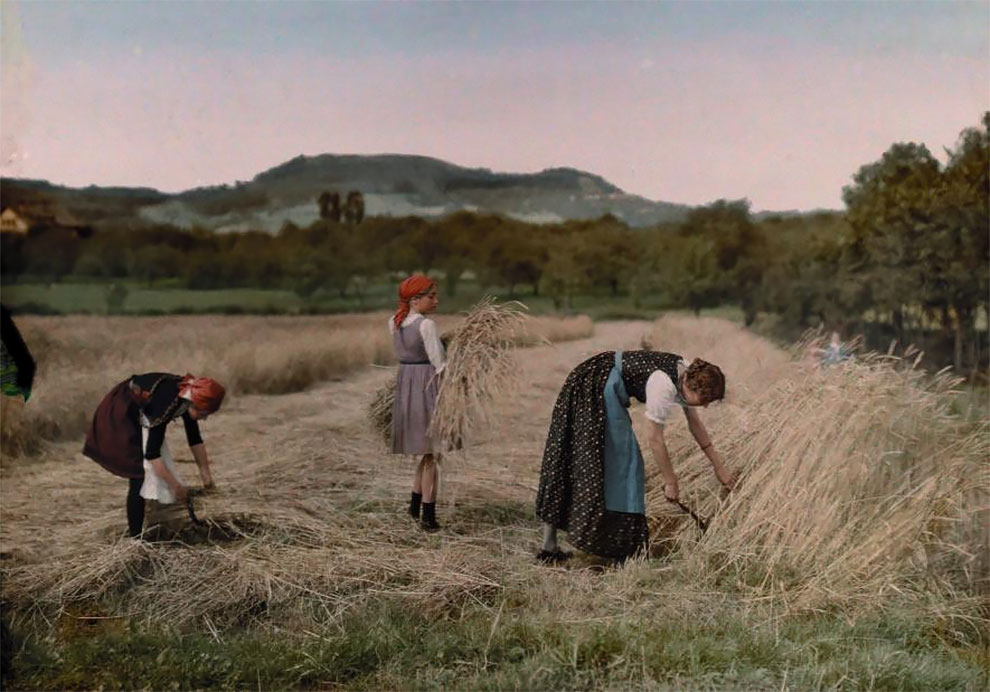
Source: DYT. These Autochrome Photos From The 1920s And ’30s Resulted An A Painting-Like Quality That Not Even Today’s Best Instagram Filters Can Replicate
A number of years ago I went with a friend to see an exhibition of works by Alfred Stieglitz, Edward Steichen and Paul Strand at the NY Metropolitan Museum. While there I noticed some small photographs with vibrant colors and almost a glow to them. At that moment I fell in love with autochromes.
According to Wikipedia:
The Autochrome Lumière is an early color photography process. Patented in 1903 by the Lumière brothers in France and first marketed in 1907, it was the principal color photography process in use before the advent of subtractive color film in the mid-1930s.
Autochrome is an additive color “mosaic screen plate” process. The medium consists of a glass plate coated on one side with a random mosaic of microscopic grains of potato starch dyed red-orange, green, and blue-violet (an unusual but functional variant of the standard red, green, and blue additive colors) which act as color filters. Lampblack fills the spaces between grains, and a black-and-white panchromatic silver halide emulsion is coated on top of the filter layer.
Unlike ordinary black-and-white plates, the Autochrome was loaded into the camera with the bare glass side facing the lens, so that the light passed through the mosaic filter layer before reaching the emulsion. The use of an additional special orange-yellow filter in the camera was required to block ultraviolet light and restrain the effects of violet and blue light, parts of the spectrum to which the emulsion was overly sensitive. Because of the light loss due to all the filtering, Autochrome plates required much longer exposures than black-and-white plates and films, which meant that a tripod or other stand had to be used and that it was not practical to photograph moving subjects. The plate was reversal-processed into a positive transparency — that is, the plate was first developed into a negative image but not “fixed”, then the silver forming the negative image was chemically removed, then the remaining silver halide was exposed to light and developed, producing a positive image.
The luminance filter (silver halide layer) and the mosaic chrominance filter (the colored potato starch grain layer) remained precisely aligned and were distributed together, so that light was filtered in situ. Each starch grain remained in alignment with the corresponding microscopic area of silver halide emulsion coated over it. When the finished image was viewed by transmitted light, each bit of the silver image acted as a micro-filter, allowing more or less light to pass through the corresponding colored starch grain, recreating the original proportions of the three colors. At normal viewing distances, the light coming through the individual grains blended together in the eye, reconstructing the color of the light photographed through the filter grains.
I’ve tried to re-create the look digitally myself with no success. I’ve acquired filters that professed to produce this look – but they didn’t. I’m forced to conclude that, as the article suggests, you just can’t produce a digital equivalent. And I’m not inclined, nor am I skilled enough, to try the original process myself, so I’ll just have to admire them from afar.
Of the pictures shown in the article my favorites are the one above, and that of the soldiers (I thought at first Austrian because of the double headed eagle flag, but they could also be Russian or one of the other countries that uses such an eagle on its flag).
